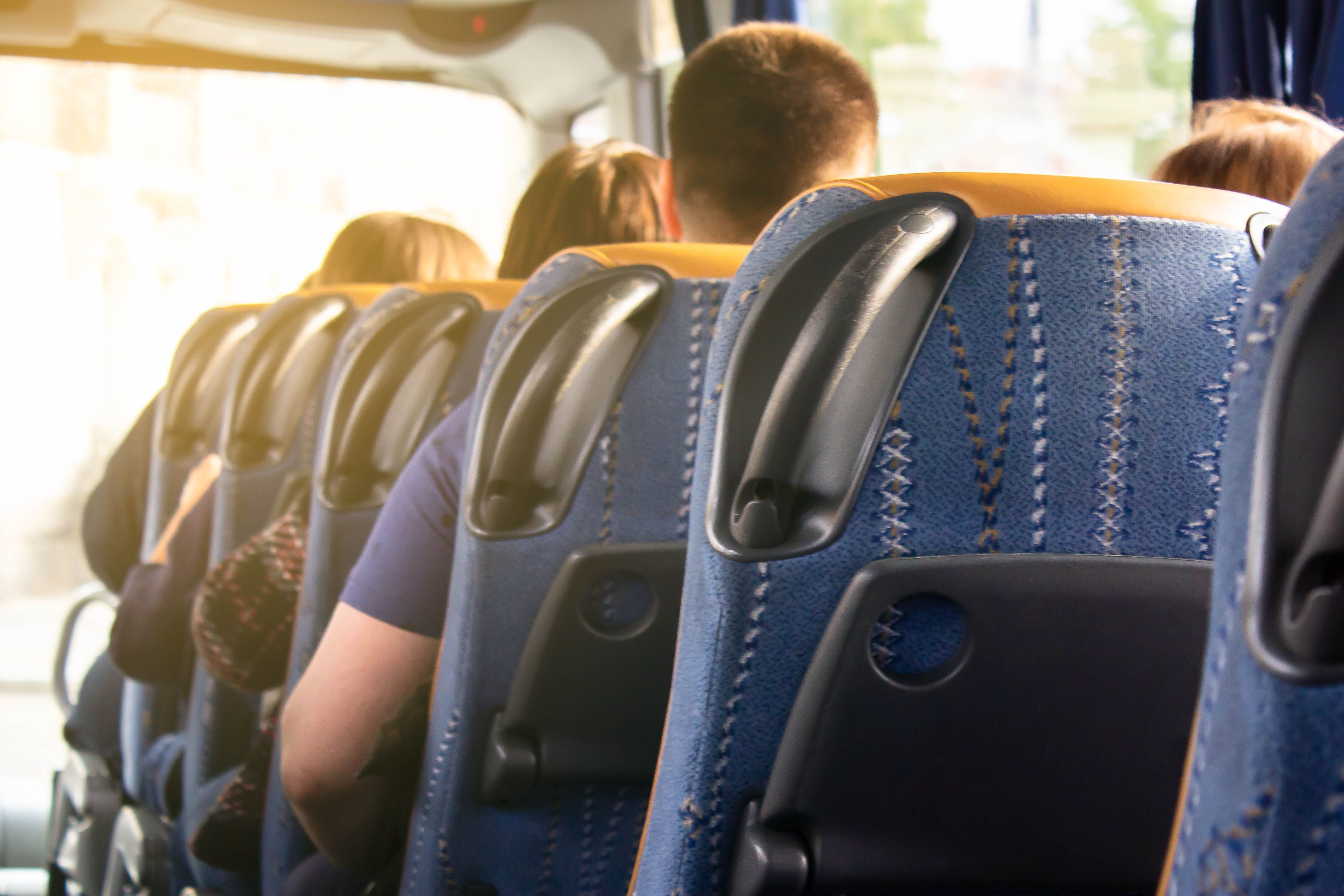Your Seat on Public Transportation Determines Exposure to Infectious Droplets
Here’s where you should sit on the bus to avoid COVID-19 droplets.

Public transportation, a necessity for many people, has been complicated by the COVID-19 pandemic. Investigators from IBM Research Europe sought to discover how viruses are transmitted on public transportation, and whether ventilation systems can mitigate exhaled droplets.
Published today in AIP Physics of Fluids, the study evaluated the release of droplets from different seat positions to analyze the decontamination performance of the ventilation system.
Air flow in public transportation vehicles is particularly complicated, as their ventilation systems must constantly renew the air while maintaining thermal comfort in densely packed spaces. According to the study, “the complexity of the matter lies in the presence of a polydisperse droplet buoyant flow that results in a stratification of droplets by size.”
The investigators investigated speech-like patterns of droplet dispersal in a public transport scenario consistent with asymptomatic transmission conditions. They performed a Eulerian–Lagrangian simulation with heightened temporal and special resolution to understand droplet dispersal.
Using a 3-3 passenger layout of infinite rows in a generic rectangular space, the investigators computed exhalation from the aisle, middle, or window seats. Mitigation strategies, such as face masks, were not considered in the simulation.
Overall, 24.1% of droplets were removed through the exhaust in the first 40 seconds, a better performance than the investigators had anticipated. Most droplets passed at a safe distance of passengers’ mouths, but a few passed at 1 cm.
Droplets from the window seat passengers raised more vertically and were less invasive to other passengers. Predictably, droplets from the middle seats were the most contaminable, signifying that downward flow from personal ventilation could be moving the droplets into one’s breathing area. Additionally, they found the aisle passengers were the most contaminated by the middle passengers’ droplets. Droplets released from the aisle seats were dragged down immediately by the ventilation system.
Study author Carlos Peña-Monferrer said, "By visualizing the droplets and the flow, you realize the number of physical phenomena taking place around us that go unnoticed, such as the complex interactions between natural body plumes, exhalation, and ventilation…When it comes to preventing risk of infection, this is precisely what makes it difficult to contain."
Given the continuation of the COVID-19 pandemic, and emerging variants like Omicron, this study of airflow and droplet exposure was crucial. "These high-resolution simulations were focused on public transportation vehicles, but they could be extended to commercial or residential buildings, health care facilities, offices, or schools," Peña-Monferrer said.

















